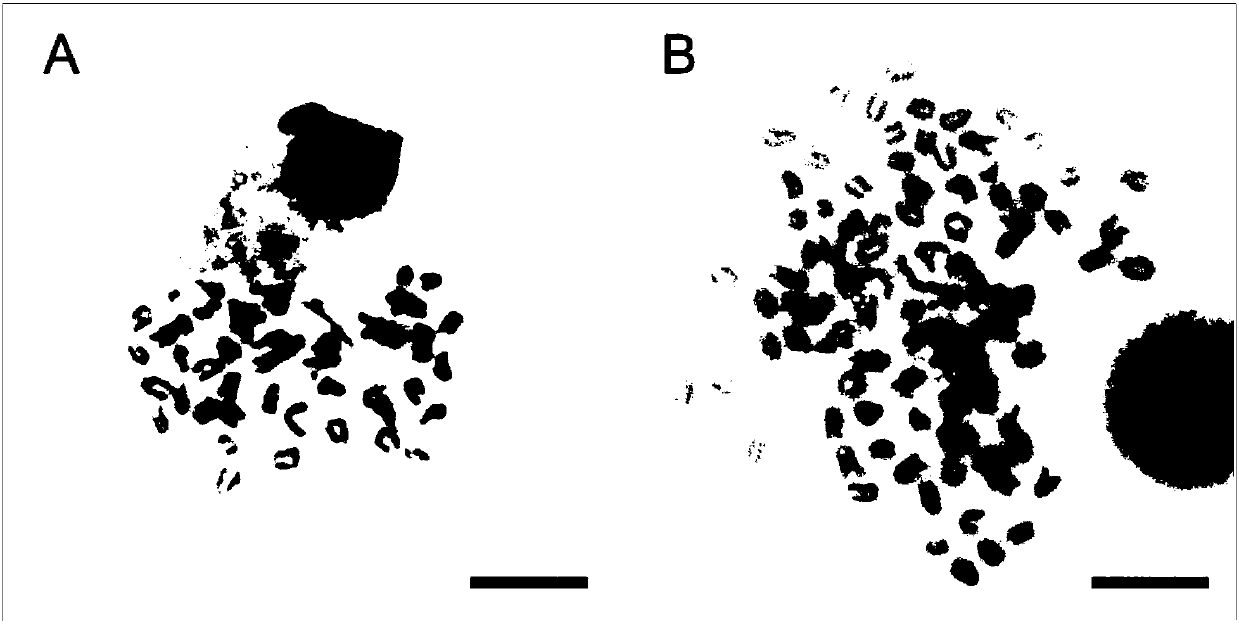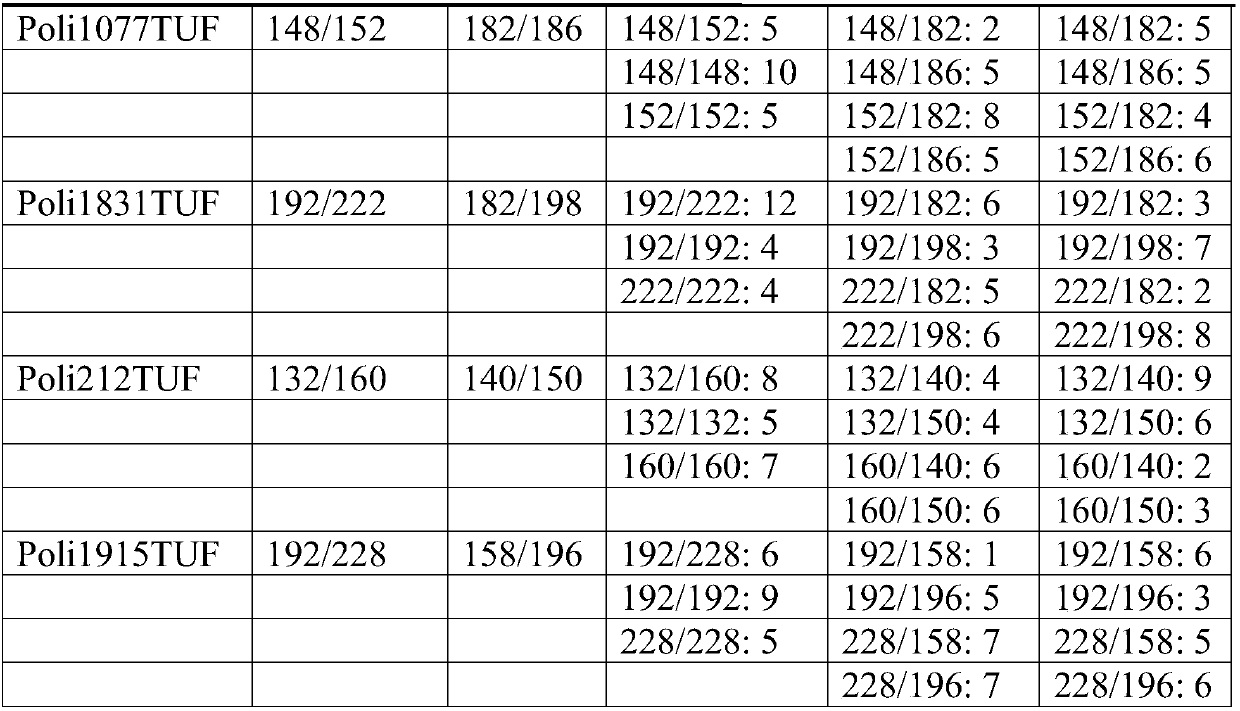Inducing method of bastard halibut allogynogenetic tetraploid
A technology of gynogenesis and tetraploidy, which is applied in the field of induction of gynogenesis and tetraploidy of flounder, can solve problems such as inability to fix
- Summary
- Abstract
- Description
- Claims
- Application Information
AI Technical Summary
Problems solved by technology
Method used
Image
Examples
Embodiment 1
[0049] 1) Collection of sperm and eggs
[0050] Fresh sea bream sperm and flounder eggs were collected from the Beidaihe Central Experimental Station of the Chinese Academy of Fishery Sciences.
[0051] 2) Sperm UV irradiation
[0052] Dilute the above sperm 40 times with diluent (Grüner's solution), and irradiate for 45 seconds under a 30cm ultraviolet lamp at a distance of 30w, and the irradiation dose is 70mJ / cm 2 .
[0053] 3) Artificial insemination:
[0054] The red sea bream sperm and flounder eggs irradiated by ultraviolet rays were mixed according to the number ratio of 1:10, and after stirring evenly, 10 times the volume of seawater at 15°C was added to it to obtain a mixture of sperm and eggs activated by seawater.
[0055] 4) Cold shock treatment inhibits the release of the second polar body:
[0056] After being activated in seawater for 3 minutes, the sperm-egg mixture was transferred to seawater at 0°C for cold shock treatment for 45 minutes, and then transf...
Embodiment 2
[0084] 1) Collection of sperm and eggs
[0085] Fresh sea bream sperm and flounder eggs were collected from the Beidaihe Central Experimental Station of the Chinese Academy of Fishery Sciences.
[0086] 2) Sperm UV irradiation
[0087] Dilute the above-mentioned sperm by 50 times with diluent (Grüner's solution), and irradiate for 60 seconds under a 32cm ultraviolet lamp at a distance of 32w, and the irradiation dose is 92mJ / cm 2 .
[0088] 3) Artificial insemination:
[0089] The red sea bream sperm and flounder eggs irradiated by ultraviolet rays are mixed according to the number ratio of 1-10, and after stirring evenly, 12 times the volume of seawater at 19° C. is added thereto to obtain the sperm-egg mixture activated by seawater.
[0090] 4) Cold shock treatment inhibits the release of the second polar body:
[0091] After being activated in seawater for 3 minutes, the sperm-egg mixture was transferred to seawater at 3°C for cold shock treatment for 40 minutes, and ...
Embodiment 3
[0098] 1) Collection of sperm and eggs
[0099] Fresh sea bream sperm and flounder eggs were collected from the Beidaihe Central Experimental Station of the Chinese Academy of Fishery Sciences.
[0100] 2) Sperm UV irradiation
[0101] Dilute the above sperm 30 times with diluent (Grüner's solution), and irradiate for 30 seconds under a 28cm ultraviolet lamp at a distance of 28w, and the irradiation dose is 55mJ / cm 2 .
[0102] 3) Artificial insemination:
[0103] The red sea bream sperm and flounder eggs irradiated by ultraviolet rays were mixed according to the number ratio of 1:20, and after stirring evenly, 8 times the volume of seawater at 17°C was added to it to obtain the sperm-egg mixture activated by seawater.
[0104] 4) Cold shock treatment inhibits the release of the second polar body:
[0105] After being activated in seawater for 3 minutes, the sperm-egg mixture was transferred to seawater at 2°C for cold shock treatment for 50 minutes, and then transferred t...
PUM
 Login to View More
Login to View More Abstract
Description
Claims
Application Information
 Login to View More
Login to View More - R&D
- Intellectual Property
- Life Sciences
- Materials
- Tech Scout
- Unparalleled Data Quality
- Higher Quality Content
- 60% Fewer Hallucinations
Browse by: Latest US Patents, China's latest patents, Technical Efficacy Thesaurus, Application Domain, Technology Topic, Popular Technical Reports.
© 2025 PatSnap. All rights reserved.Legal|Privacy policy|Modern Slavery Act Transparency Statement|Sitemap|About US| Contact US: help@patsnap.com



